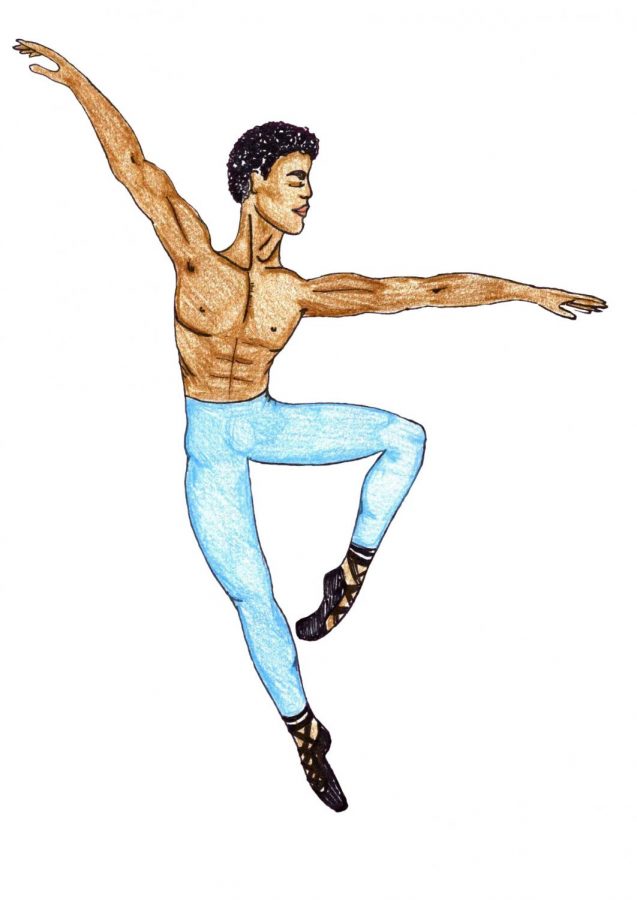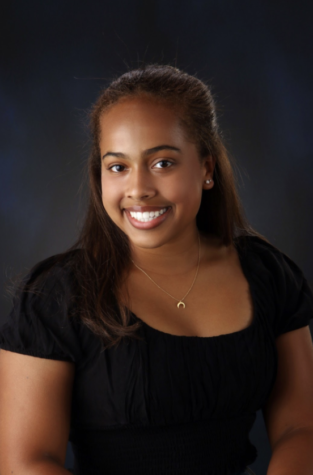Lack of POC dancers prompts call for change
November 8, 2019
On Aug. 23, 2019, Good Morning America host Lara Spencer made comments mocking 6-year-old Prince George for studying ballet.
According to The New York Times, Spencer responded while laughing and saying, “I have news for you, Prince William. We’ll see how long that lasts.”
Spencer’s comments sparked a worldwide controversy around the stigma of men in the arts, but more specifically dance. In response, a multitude of viewers voiced their disappointment in Spencer, including famous male-identifying dancers such as Emmy award winning choreographer Travis Wall.
“Not only did you inspire your audience and colleges to participate in the laughter, you have now added fuel to the fire to a massive problem in the country, which is bullying,” Wall responded in a video posted to his Instagram on Aug. 23.
The majority of pushback towards Spencer’s comments were made mostly by white males, which shows whose voices are amplified over others.
Here at ETHS, the stigma around the arts programs, specifically dance, is not that different from Spencer’s comments. The ETHS Dance Company (EDC) has only had one boy for the past two years, and in the past four years of YAMO dance, there has only been two identifying males involved. Toxic masculinity is prevalent in the dance world and may ultimately contribute to stereotypes that men would prefer to participate in sports rather than in the arts.
That said, there are still many boys who are passionate about dance.
“I am very used to being the only boy, so it doesn’t bother me that much,” says sophomore Ferran Amaral, a dancer in EDC. “I think a lot of guys are kind of embarrassed to join the company even though they dance, just because it’s dancing in front of the school.”
These trends are visible outside of ETHS as well. The majority of ballet dancers are white and female. According to a 2016 research by Data USA, about 65.9 percent of ballerinas are white females when 13.6 percent of ballerinas are dancers who identify as white males. Only 2.27 percent of ballerinas are African American females when 4.45 percent of ballerinas are African American males. These numbers clearly represent the lack of diversity in the professional ballet world.
This data illustrates the prevalent stereotypes in our world regarding who achieves success in the dance world.
Sydney Vasquez, a senior dancer at Le Petit Ballet School of Dance and member of the ETHS dance company states, “I feel that even though the dance world is pushing more towards athletic and more muscular ballerinas, …the long rooted norm of skinny ballerinas is still very much a part of the [dance] world.”
Most ballerinas also have similar body types based on the idea that some companies want to have dancers that look alike. These stereotypical influences in the ballet world could discourage young ballerinas from pursuing ballet as a career.
“I was once told that no ballet company would want to hire me because I would break the color line. In other words, in the corps de ballet, I would stand out too much,” says Kara Roseborough, an African-American ballet dancer and instructor at Dance Center Evanston.
“Being a black woman, I am also more muscular than many of the white women I have danced with, and I have had teachers not understand that certain technical or aesthetic things about me would not change given my body type,” Roseborough explains.
In addition to contributing to racial bias against certain dancers, the history of ballet also contributes to skewed gender roles. Historical ballets such as The Nutcracker that are performed by professional companies were created around the 1800s when females had specific roles in society including nurses and servants, and where males were superior. According to the Austrialian Ballet, Swan Lake, for example, is about two women who fight over a prince for whom they are both in love with. These “classic” ballets are still performed today, and many perpetuate stereotypical gender roles for women, painting them as inferior.
Partnering roles between the man and the woman, or the prince and the princess, play a role in ballet casting as well. Type casting is an issue that exists when a person gets a certain role just because of the way they look. For example, if a director wants a certain role with dancers that look similar, they may choose white women for the role rather than including other races, genders or body types that do not match.
Amaral explains his experience with type casting regarding male roles in dance performances.
“Teachers want to praise us male dancers for sticking with it, so there is almost a guarantee for good parts in shows and moving up in levels,” he explains.
For younger kids starting out in ballet classes now, there is more diversity in gender and race. As they get older, however, many dancers of color and males drop out as they continue with other extracurricular activities or become discouraged looking at the older dancers and not seeing role models who represent their race or gender in the ballet world.
“Young dancers of color may not be exposed to professional dancers of color making a career for themselves in ballet or other dance genres. They therefore may feel they don’t have a place in this field when they do,” Roseborough elaborates.
Years later, the ballet world is slowly diversifying with a growing number of under-represented groups. In fact, one of the greatest principal ballerinas is Misty Copeland, who received the title of the first African American principal ballerina in American Ballet Theater (ABT) history in 2015. Alvin Aliey, a predominantly Black modern dance company in New York, continues to travel around the world spreading their love and inspiration to young dancers. Another dance style created in Chicago called Hiplet is a mixture between hip hop and ballet. Hiplet ballerinas dance hip hop on pointe, and their dancers are also predominantly black.
“Not a lot of people of color know how to get involved or know what kind of programs to go through to get into a company,” says Stephanie Black, a senior dancer in EDC.
For beginning dancers in ballet today, there is more diversity in gender and race. As they get older, many dancers of color and males drop out as they continue with other extracurricular activities or become discouraged looking at the older dancers and not seeing role models who represent their race or gender in the ballet world.
“I think if students of color don’t feel that have to conform to a mold and can just enjoy the art form for what it has to offer technically and artistically, we will see a bigger cohort of students of color continue through the upper levels,” says Roseborough.









